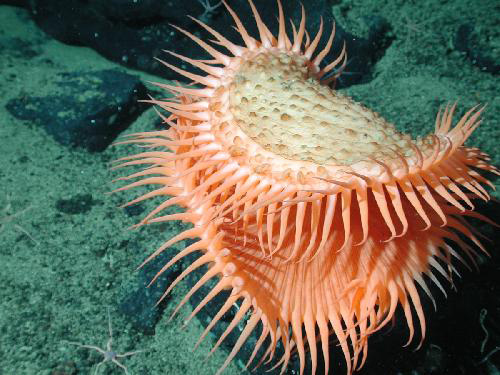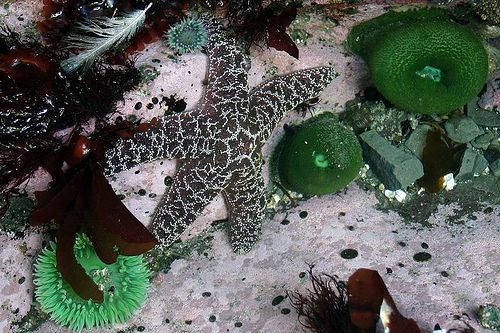EXPLORE: Life in Ocean Habitats (BrainPop)
| Site: | Mountain Heights Academy OER |
| Course: | Earth Science Q4 |
| Book: | EXPLORE: Life in Ocean Habitats (BrainPop) |
| Printed by: | Guest user |
| Date: | Saturday, 26 July 2025, 9:57 AM |
Description
intros to the videos
1. READ: Introduction

2. VIEW: Corals (BrainPop)

Coral reefs are delicate ecosystems. Corals are found all over the Earth's oceans, but most coral reefs are found in tropical waters. Coral colonies grow between 1-10 cm per year, and can live for decades or centuries.
3. READ: Abyssal Zone: Seamount Communities

Seamounts teem with animal and plant life. Photo courtesy of NOAA, Ocean Explorer/Flickr.
4. READ: Abyssal & Bathal Zones: Deep Sea Benthic Organisms

Deep sea benthic organisms must learn to adapt to the cold, dark, high-pressure environments of the deep sea. Photo courtesy of neptunecanada/Flickr.
5. READ: Tidal Zones

Remember, Earth's tides are the natural rising and falling of sea level, caused by the gravitational attraction between the Earth, sun, and moon. The difference between the water level at high tide and low tide is known as thetidal range, or intertidal zone. Organisms that live in the intertidal zone need to adapt to changing physical and chemical conditions. There are five intertidal zones, each with differing levels of biodiversity. As you view each of these zones in the interactive lesson on the next page, compare the biodiversity of each zone. Also, think about the physical stresses organisms deal with in each zone, and how they might learn to adapt to these conditions. The five zones are as follows:
- Spray zone - usually exposed, but can be underwater during very high tides, spring tides, or severe storms. The spray zone is constantly splashed by waves and ocean spray.
- Upper intertidal zone - flooded during peak tides, but exposed at other times. This zone is bounded by high tide level and spring high tide level.
- Mid intertidal zone - generally submerged except during low tide. This zone is located between high and low tide.
- Low intertidal zone - exposed only during the lowest tides. This zone is located between the low tide and low spring tide lines.
- Sub-tidal zone - located below the low spring tide line.
Tidal pools form along rocky coastlines, and contain pockets of seawater. Organisms in tidal pools need to adapt to the alternating high and low water levels and the associated changes in water chemistry (e.g. salinity), biological processes (e.g. predation by birds and land-based organisms ,when trapped and exposed as the water recedes), and physical properties such as wave action, exposure to air, and changes in temperature.Organisms such as mussels, snails, urchins, anemones, rockweed, and sea stars must cope with these changing chemical, physical, and biological challenges.
After you have completed this part of the lesson, you can check the box for this lesson piece in the course to mark it as complete